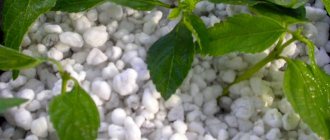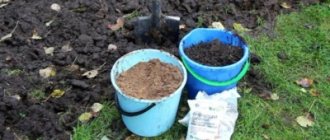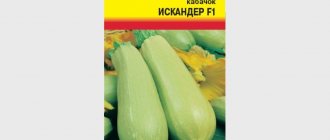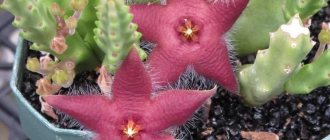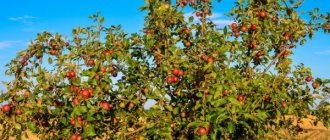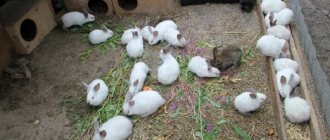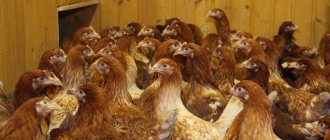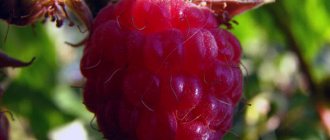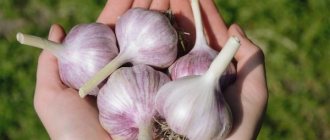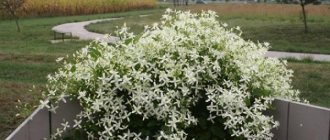If we summarize all the requirements for the properties of ideal soil, it turns out that such a natural substance does not exist. Take, for example, two such contradictory requirements: that it freely allows air to pass through, but retains moisture. This can only be done with the help of artificial additives to the substrate - foam materials. The most famous of them include vermiculite and perlite. Let's look at their pros and cons.
Perlite
Perlite itself is volcanic glass that has been exposed to moisture over time and formed compounds similar to crystalline hydrates. Water slightly lowers the softening temperature of the mineral, which is used to transform it into a kind of hardened glass foam - expanded perlite. It is obtained from crushed source material by thermal shock at a temperature of 900–1100 °C. In this case, the mineral becomes plastic, and the explosively released water forms many tiny bubbles and its volume increases 4–20 times, and its porosity reaches 70–90%.
The finished product is light granules from light gray to snow-white. Due to its glass origin, it is quite hard, but very fragile - the granules are easily crushed into dust with your fingers. The resulting powder has strong abrasive properties; large pieces of high-density perlite can damage the skin. The scope of its application depends on the size of the fraction:
- construction - various brands of expanded perlite sand of a fraction of 0.16–5 mm (VPR - ordinary), as well as crushed stone 5–20 mm, density usually 75–200 kg/m³;
- agroperlite - the same construction material, only with large grains (VPK - large), fraction 1.25–5 mm, but some companies produce agroperlite according to their own specifications, for example, Zh-15, with grain sizes 0.63–5 mm and density not higher than 160 kg/m³;
- powder – VPP grade, fraction less than 0.16 mm, used for various filters.
Agroperlite is chemically neutral (average PH = 7), loose, granular, porous material that does not contain nutrients and soluble salts. It is not susceptible to chemical or biological decomposition (rot, mold); moreover, it itself protects plant rhizomes from various diseases, for example, root rot. An excellent sorbent (absorbs water over 400% of its own weight), is of no interest to insects and rodents.
What are the benefits of perlite for plants?
Expert opinion about Perlite:
If you are not familiar with this substance, it is worth trying it for agricultural purposes. Expanded perlite has a wide range of useful properties for rooting, growing plants, and storing fruit products. The use of agroperlite protects seedlings from the development of bacterial and fungal infections and helps accelerate growth processes. In pot culture, it improves the quality of the earthen coma, reduces moisture evaporation, and prevents the formation of a surface crust.
Due to the above properties, agroperlite is used when growing various plants in order to improve the quality of soil mixtures before planting or replanting crops. You can often hear the question - why do you need perlite for plants?
Perlite is used when growing various plants.
With its help you can avoid:
- caking of soil layers;
- development of deficiency of nutrients and microelements;
- formation of a hard crust on the soil surface;
- improve the hygroscopicity and breathability of the soil mixture;
- in case of use as drainage - acidification of the soil;
- development of putrefactive reactions during rooting.
Types of perlite
There are several varieties of perlite that are used in different areas, but the most popular of them are expanded and lamellar.
Expanded perlite is used only in agriculture, while lamellar perlite is most common in construction, the oil industry, metallurgy, medicine and the food industry. Let's look at them separately, which will allow us to understand why each type of perlite is needed for plants and construction.
Expanded perlite
Expanded perlite is natural perlite that is fired at high temperatures in special ovens. By exposing the rock to temperatures ranging from 850 to 1250 °C, it swells and pops open like popcorn. Depending on the size of the expanded perlite, it can be granular or resemble crushed stone.
Another name for expanded perlite is agroperlite , since this is what farmers use.
Expanded perlite has the following characteristics:
- Durability.
- Fire resistance (up to 900 °C).
- Thermal insulation.
- Soundproofing.
- Good absorbency (absorbs up to 400% of its weight).
- Biological stability (expanded perlite has no tendency to rot, microorganisms, insects, and rodents do not settle in it).
- Ecological cleanliness and sterility.
Very often, expanded perlite is used for seedlings, which require a lot of moisture and at the same time are sensitive to temperature changes. But still, the most popular area of use remains floriculture, since perlite for flowers is both a drainage system and a system for preventing the top layer of soil in a pot from drying out. This is possible due to the fact that perlite has the ability to accumulate moisture and then release it to the soil.
Technical characteristics of expanded perlite
- Bulk density:
- perlite sand: 45…200 kg/m3 (depending on particle size);
- perlite crushed stone: up to 500 kg/m3.
- Particle size: 1…10 mm.
- Non-flammable, fire-resistant (heat-insulating and fire-resistant plasters are made based on perlite).
- Porosity 70...90%.
- Withstands temperatures in the range: - 200°C...900°C.
- Low thermal conductivity: 0.043…0.053 W/mK.
- Hygroscopic material (capable of absorbing moisture and releasing it outside without deteriorating its properties).
- Relatively low cost: 300...400 UAH/m3.
Lamellar perlite
Lamellar perlite has a wider range of uses, and the question of what it is needed for first brings us to the construction industry. By adding perlite to the composition of building materials, it is possible to significantly increase their resistance to fire.
In addition, thanks to perlite, building structures become stronger, lighter and less bulky. Lamellar perlite is used in the following industrial sectors:
- Mining of oil and gas. Since perlite is a good adsorbent, it is used to absorb fuel oil and gasoline, which are subsequently simply burned out of it.
- Housing and communal services. Perlite is used to purify water in city water supplies.
- Food sector. Perlite is used as a filter for purifying sugar syrups and vegetable oils.
- Ecology. Thanks to perlite, active cleaning of water bodies and lands that have suffered from industrial pollution is carried out. Expanded perlite can also be used for this purpose.
- Metallurgy. By adding pearlite to alloys, it is possible to achieve a pearlitic structure in steel.
- Medicine. Perlite is used as a filter for medications.
Did you know? Perlite is even used in hookahs.
For this purpose, it is impregnated with propylene glycol and various flavorings, and then placed in a hookah instead of tobacco.
Hygroscopicity of perlite
When watered, perlite absorbs moisture and increases in volume several times. As the earthen clod dries out, moisture is gradually released from the perlite particles and evenly “waters” the plant. And, if fertilizers have been added to the water, then it also “feeds”. Thus, plants need watering and fertilizing less frequently, and the roots are saturated with water evenly, which is important for moisture-loving but flood-sensitive plants. And by changing the volume of perlite, soil aeration improves.
We study all known varieties
In total, there are 4 forms of release of this insulation: backfill (it is also called sand), slabs (outwardly similar to penoplex), roofing models and dry building mixtures. These varieties have some features that you should know.
Backfill insulation
The first form factor of Perlite to emerge was loose insulation. The main task of this material in the construction of houses is to lighten the structure (it is lighter than a standard cement-sand mixture) and increase its thermal insulation qualities. This layer is usually used for backfilling floors and interfloor layers. It is also often used to fill voids in wall masonry. Less often it is used in combination with (or instead of) warm plaster.
The most convenient and practical form is slabs
According to official statistics, about 60% of all Perlite produced on the planet goes to create thermal insulation boards. They are obtained by hydraulic pressing, making them very convenient to use. The binder may differ depending on the specific type (bitumen, lime, polymer compounds, cement, liquid glass, etc.).
This category of materials has quite high hygroscopicity. Therefore, it is mostly used for interior decoration. However, when laying an additional moisture-proof layer, it can also be used for exterior finishing. However, this is not very justified from an economic point of view.
Roofing models
From the name, it is obvious that such analogues are used primarily for roof finishing. For this task, the so-called bitumen perlite is used. This material allows you to create a thermal insulation layer of any shape, so it is often used for buildings of unusual design.
We recommend: Taps for heating radiators: which ones are better, how to install them?
Important! There is no need to heat this coating before use!
The average thermal conductivity for this variety is 0.067 W (m*C), which is a very worthy result. This coefficient allows the use of this coating even in northern regions. It is also worth noting the non-flammability of this insulation, which ensures the overall safety of the building.
Dry building mixtures based on Perlite
As a result of mixing cement and perlite sand, a very effective dry construction mixture is obtained. The solution is prepared very simply - just add water (that is, no additional additives such as PGS or gypsum are required). Basically, a similar composition is used for filling cavities in brickwork, grouting seams and cracks, as well as creating a plaster layer with increased thermal insulation characteristics. At the same time, it allows you to easily level the surface.
Where is it used?
The properties and characteristics of perlite have made it necessary in many industries, agriculture, and environmentalists.
Metallurgy
This is a valuable material for metallurgists:
- The mineral is added to many grades of steel and cast iron. In fact, a mixture of cementite and ferrite turns into pearlite.
- The shape of pearlite is determined by cementite. Depending on the type of its crystals, pearlite agglomerates can be lamellar or granular.
- Austenite (a high-temperature modification of iron) becomes pearlite during the slow cooling of steel or cast iron. In this case, the modification of iron changes, and excess carbon is released as cementite or carbide.
The pearlite structure facilitates further machining of steel.
Metallurgists use perlite as an insulator and protection against fire or heat. The mineral can withstand a temperature range from -200 to +900°C.
Other industries
The benefits of mineral raw materials are recognized by specialists in other industries:
- For the oil and gas complex, the ability of a mineral to absorb oil or fuel oil film from the surface of reservoirs is important. Cement with the addition of perlite is used to strengthen the walls of oil and gas wells.
- Pharmacists use it to purify liquid medications.
- Manufacturers of vegetable oils, beer, wines, syrups, and juices cannot do without the mineral as a purifier.
In each case, a specific type of raw material is used.
Construction
The mineral is used as sound and heat insulation in buildings from the basement to the attic or roof:
- Perlite insulation is effective for floors, walls, and interfloor ceilings.
- Structures are becoming lighter and more compact. Along the way, housing or offices become fireproof.
- The mineral is used as a component of mixtures or instead of crushed stone and sand. Thus, plaster with perlite is valued for its lightness, strength, and heat resistance.
Insulation with perlite
Granulated raw materials of 0.5 cm are suitable for builders: such fragments are compacted the least.
Agriculture
Perlite for plants is a universal material. Its beneficial effects have been proven at all stages of the biological cycle - from planting seeds or seedlings to harvesting:
- Suitable for storing planting material.
- Thanks to the circulation of moisture, fluctuations in temperature and humidity of the soil into which the mineral is added are eliminated. Water will never stagnate in it. There is no risk of washing out in case of heavy rains.
- Perlite makes the soil loose, it does not cake and does not “petrify”. Thanks to this, oxygen and nutrients reach the plant root system without problems. This is especially important for clay or sandy soils.
- The appearance and development of weeds, diseases, and pests is blocked.
- Layers of expanded perlite cover the crops stored for winter storage.
Perlite for plants
The industry often uses the so-called “perlite sand” - raw materials of the smallest fractions. It is suitable for open ground, greenhouses, and home floriculture.
Cleaning
For ecologists and adherents of a healthy lifestyle, the properties of perlite as an adsorbent are of particular importance:
- The mineral is used to purify water in plumbing, swimming pools, aquariums, and sewage.
- They rid the soil of chemicals, radiation, and other contaminants. Which is especially important for industrialized regions.
Perlite is a popular filler for home and industrial water filters.
Landscape design
The rock of volcanic origin does not rot or decompose by microorganisms. Rodents or insects do not live in it.
That’s why lawns and sports fields are covered with pebbles. Water does not accumulate on them. Grass grown on soil with a mineral supplement does not dry out even in drought.
It is much easier to care for such a lawn, especially a large field.
Other areas
The mineral impregnated with flavorings is used instead of tobacco in hookahs.
This is an environmentally friendly way to humidify the air in the heat or during the heating season. To do this, raw materials of large fractions are generously moistened and laid out on a pallet or other surface. The water will evaporate gradually.
Collectors of mineral collections are interested in pristine rocks from different parts of the planet and processed versions.
Perlite and perlite sand: areas of application
Visually, perlite is similar to crushed stone or sand, the fractions can be of different sizes, the color is white, sometimes slightly grayish. This rock is used in medicine, energy, metallurgy, but we are more interested, of course, in agriculture and construction.
Regarding the use in gardening and horticulture, a special variety can be distinguished - agroperlite. This is expanded perlite, which has the following applications:
- It can be added to clay soils to improve their composition, reduce the risk of plant rotting and crust formation in the beds.
- In sandy soils, perlite helps retain moisture.
- Perlite's neutral pH helps combat excess soil acidity.
- You can germinate seeds in perlite, and if you mix them with fine agroperlite, they will be evenly distributed throughout the bed during sowing.
- Agroperlite helps to cope with fungal diseases of plants, prevent the appearance of mold and algae.
- Perlite is used in hydroponics as a substrate or one of its components. And large fractions are often used together with expanded clay to create lower drainage.
- Perlite will ensure an even supply of fertilizer to the roots, as it absorbs water and substances dissolved in it.
- Due to its low thermal conductivity, agroperlite will protect plant roots from frost in winter, and from overheating in summer.
- You can store corms, tubers and bulbs in perlite, which will be protected from rotting and temperature changes.
Having understood the wide range of applications of perlite in gardening and horticulture, let’s move on to construction.
In this area, in 60% of cases, perlite sand or crushed stone is used as insulation, due to its low thermal conductivity. There is GOST 10832–2009, which is called “Sand and crushed perlite expanded stone.” It is he who sets the technical conditions for the use of these materials.
According to GOST, expanded crushed stone is used as a filler in the process of producing lightweight concrete. Expanded sand can also be used for the production of lightweight concrete, sound and heat insulation materials, dry construction mixtures, plaster mortars, and also as thermal insulation backfill.
At the same time, GOST indicates that expanded perlite sand as a thermal insulation backfill can be used on surfaces with temperatures from minus 200 to plus 875 degrees Celsius.
So, let's consider several options for using perlite sand or crushed stone:
- Filling the space between the main enclosing wall of the building and the facing brick. Typically this gap does not exceed 100 millimeters. This is an inexpensive and effective way to make walls warmer.
- A layer of perlite sand can be used in the process of creating a dry floor screed. A reinforced screed should be laid on top of the perlite or floor slabs should be laid.
- Expanded perlite sand is also used for backfilling floors, including thermal insulation of an attic space or the base for a soft roof.
- Holes in ceramic blocks used in house construction can also be filled with perlite.
Important! Dry perlite is extremely volatile, fine dust will get into your eyes and nose, sealed goggles and a respirator are required!
Experts advise soaking perlite with water directly in the bags in which it is sold, and then working quietly without dust.
To create a solution, the following proportions are usually used: a bucket of cement, two buckets of perlite and two buckets of sand. Craftsmen advise adding literally 20 grams of dishwashing detergent, for example, Fairy, to this solution as an air entrainer and plasticizer. This solution is used, for example, when laying wood concrete blocks.
We’ll tell you separately about perlite concrete, which uses expanded perlite sand as a filler. Perlite concrete blocks in our country are still a new building material, although it has many advantages and great prospects. Perlite concrete blocks are environmentally friendly, the walls are lighter, and the laying process is simple. One such block replaces three or four bricks. Perlite concrete blocks with a density of 600–800 kg/m3 are suitable for construction.
Heat and sound insulating plasters are also produced based on perlite, which are characterized by a low heat transfer coefficient, high frost resistance, and excellent sound-absorbing properties. At the same time, the volumetric weight of the plaster layer is lower, because expanded perlite is a lightweight material. The addition of cement allows the use of perlite plasters as finishing of facades and for arranging slopes. For interior work, perlite plasters with gypsum additives can be used.
As you can see, the scope of application of perlite is very wide. As for the cost, the price of a cubic meter of perlite sand in Moscow will be from 1300 to 2300 rubles, depending on the fraction. The most popular are perlites with a density of 75 and 100 kg/m3, fractions from 0.16 to 2.5 millimeters. published by econet.ru If you have any questions on this topic, ask them to the specialists and readers of our project here.
Advantages and disadvantages of agroperlite when used in agricultural technology
As mentioned above, agroperlite used in crop production is heat-treated expanded perlite, presented in 5 fractions. Each of them is suitable for specific purposes. The largest fraction is the first, the size of a small coin, the smallest is the fifth, the size of a large grain of sand.
Agroperlite is widely used in crop production due to the following advantages:
- High moisture capacity. Capable of absorbing a volume of liquid 4 times its own weight, and then slowly releasing it into the soil, protecting plants from overflowing.
- Biological resistance. Does not decompose, does not rot under the influence of microorganisms and does not attract rodents and insects.
- Chemical inertness. Does not react with alkalis and weak acids.
- Ecological cleanliness. It is a sterile material and does not contain heavy metal salts or toxic substances.
- Thermal insulating properties. Agroperlite reflects ultraviolet rays, thereby protecting plant roots from overheating and hypothermia.
- Durability. The shelf life of this substance is not limited and depends only on the conditions created to preserve its free-flowing, loose structure. It should be stored in a dry room with a relative humidity of no more than 60%.
However, do not think that this material is perfect. Along with the advantages, its use also has disadvantages:
- Small fractions of agroperlite produce a lot of dust, getting into the eyes and lungs, which can adversely affect human health. To avoid this, mineral chips are moistened with water from a spray bottle before use, and all work with it is carried out wearing a mask or respirator and safety glasses. If dust does get into your eyes, rinse them with plenty of water.
- The cost of this material is high, so it is not economically feasible to use it in large volumes of gardening. Moreover, there are cheap baking powders on sale that can replace perlite.
- Agroperlite is a rather rare additive. Unscrupulous manufacturers and sellers take advantage of this and, under the guise of a natural material, sell counterfeits that are similar in appearance, but artificial and do not have its properties.
- The white color of mineral granules makes it difficult to identify pests in the soil such as root and mealybugs, fungus gnat larvae and some others.
- When growing plants using hydroponics and watering them with hard water, the substrate becomes alkalized. An alkaline environment blocks the access of nutrients to the root system of plants, and their growth slows down.
- Having a positive electrical charge, perlite does not participate in the process of ion exchange, and therefore in plant nutrition, since it is not able to retain positive ions of fertilizers.
It is strictly not recommended to fertilize perlite with calcium preparations. Together they contribute to the alkalization of the acidic environment, which negatively affects plant growth.
Perlite in construction
Foamed perlite in construction is used as:
- sand or crushed stone;
- bulk thermal insulation for floors, walls and roofs;
- component for the production of thermal insulation boards;
- component for lightweight concrete;
- additives in ready-made dry construction mixtures (for example, warm plasters);
- abrasive material.
In construction, the following properties of expanded perlite are highly valued:
- good heat and sound insulation;
- flowability, porosity and lightness;
- resistance to rotting;
- neutrality to chemically active substances;
- environmentally friendly (even when this material is heated, there is no release of carcinogens and toxic substances; there are also no heavy metals in its composition);
- fire resistance;
- relatively low cost;
- completely hypoallergenic;
- high efficiency and durability.
Scope of application
The unique properties of perlite have found their application not only in construction, but also in many industrial sectors, such as oil refining, metallurgy, energy or agriculture. The rock is also successfully used in medicine and food production.
In the construction industry, foamed perlite is mainly used as an effective heat insulator. In its original form, bulk material is used to insulate internal and external walls, floors, attics and ceilings between floors.
As a component, porous lightweight perlite is widely used in the insulation of roofs, walls, ceilings, chimneys and pipelines.
Features and application of perlite
Perlite is a rock whose structure resembles pearls.
The material has a fairly wide range of applications due to its properties:
- does not rot or decompose;
- long service life;
- good heat and sound insulation;
- fireproof, non-toxic.
The use of perlite in construction increases the insulating qualities of the building, makes the structure more fireproof and reduces its weight. This material is used to make:
- Perlite filtered powder;
- Perlite sand;
- Expanded perlite;
- Agroperlite.
The material itself is used as an additive in the production of building mixtures, plasters, and paints. They also cover the floors for better sound and heat insulation. It is actively used as insulation in the metallurgical industry during lining work. In addition, it is found in the oil industry and other areas.
Perlite or agroperlite?
In fact, when today plant growers say “perlite,” they mean, of course, agroperlite, but not everyone knows what the difference is between the first and the second.
Perlite, or foamed perlite, is a synthetic material in the form of balls filled with microscopic air bubbles. Several years ago, when it first appeared and began to be used in agriculture, these white balls had a diameter of 3-5 millimeters. It was this kind of perlite that was used when the triumphal march of synthetic substrates as substitutes for soil and organic compounds was just beginning. But then they began to produce agroperlite - sand with a much smaller particle diameter. It is this substance that is used today as a substrate in hydroponic systems.
But large perlite has not lost its popularity. It is not suitable for indoor plant growing and, especially, for hydroponics, but it is successfully used for soil cultivation: it is used to “dilute” especially heavy soils.
Specifications
Before buying perlite products, it is recommended to familiarize yourself with their properties and parameters.
| Parameter | Meaning | |||
| swollen | agroperlite | sand | powder | |
| Thermal conductivity, W/μ | 0,039 | 0,058 | 0,043-0,052 | — |
| Application temperature, up to °C | 900 | 900 | 875 | |
| Moisture content, % | 1-2 | 1 | 2 | 0,4-1 |
| bulk density, kg/m3 | 75 | 110 | 50-100 | 80-180 |
Advantages and disadvantages
So, perlite sand of various types and fractions has, of course, various strengths and has certain disadvantages. However, by grouping them together, you can structure the pros and cons of using perlite as follows:
Advantages of perlite:
- Non-flammable, has a high temperature threshold;
- High heat, sound and waterproofing properties;
- Biologically stable and inert, does not promote the proliferation of rodents and bacteria;
- Durable, environmentally friendly material;
We recommend: Soapstone stoves: features, principle of operation, do-it-yourself lining
Weaknesses of perlite and agroperlite sand:
- Such sand is not available in all construction stores, and its cost is slightly higher than similar products;
- Before use, the sand must be moistened as it generates a lot of dust;
- Its white and cream color gives certain difficulties in agriculture, especially when determining the degree of soil deterioration;
- Due to the presence of a positive electric charge, it does not take part in ion exchange.
Agroperlite: what is it and what is it for?
The mineral additive agroperlite is obtained from perlite, a volcanic rock with a characteristic fine round structure, along which it is divided into individual nuclei, which in appearance resemble untreated pearls. Hence its name: “perle” translated from French as “pearl”.
Perlite is formed from the volcanic glass of obsidian by hydration by groundwater. Obsidian, in turn, is formed in places where the edge of a lava flow touches as a result of its rapid cooling upon contact with the earth's surface. It is distinguished from other rocks of volcanic origin by the presence (more than 1%) of constitutional (bound) water, which is not present in free form, but is released when heated. The bulk of its chemical composition is made up of silicon dioxide (65%) and aluminum oxide (about 16%). It also contains water and oxides of K, Na, Fe, Ca, Mg.
Perlites are distinguished by texture and color. Based on textural characteristics, 4 varieties are distinguished: pumice-like, brecciated, massive, banded.
The color of perlite depends on the impurities it contains and can be in different shades of black, green, brown, red-brown, and white. By variety, perlite is divided into:
- resin-stone - homogeneous, without impurities;
- spherulitic - with inclusions of feldspar;
- obsidian - with inclusions of volcanic glass;
- glassy - with inclusions of sand and borax;
- and others.
The presence of constitutional water gives perlite the ability to swell when heated above 800 °C and increase in size by more than 20 times.
Expanded perlite is a porous, free-flowing, light, friable and durable environmentally friendly organic material that is used in various areas of human activity, mainly in construction and plant growing.
Perlite or vermiculite - what's the difference?
Firstly, perlite sand is slightly coarser than vermiculite. In addition, if vermiculite is a completely natural material, then perlite sand is an artificial material obtained by expanding glass. Perlite is a neutral element to the soil, while vermiculite can cause soil oxidation if added in excess. Both elements make it lighter and airier and also encourage moisture retention for plants.
Photo of packaged perlite sand
Perlite - sports champion
Hydroponic cultivation of wheat, clover and other greens has nothing to do with this, of course, but, nevertheless, perlite has distinguished itself in growing lawns.
At first, the perlite substrate began to be actively used as an admixture to the soil when creating football fields. In India, this problem was acute, as alternating drought and rain created a lot of problems when growing greens. Hydroponics, of course, could not save greens on such a scale. But perlite, which today is considered a hydroponic substrate, helped. Once it was used, the grass on the playing fields improved significantly. During the rainy season, perlite absorbed moisture, and during the dry season it gave it away. So for at least two years the playing field was covered with strong and lush grass.
Then golf lovers also paid attention to perlite as a substrate. History repeated itself. The grass on the golf courses grew well, and the holes left by the clubs were instantly filled up.
DIY insulation technology
The process of blowing in expanded perlite sand is not labor-intensive and takes little time. Seams and cracks on walls and cavities in blocks can be perfectly filled with perlite-based mortar, which can be easily made with your own hands by selecting the necessary materials.
Materials
In terms of thermal insulation properties, perlite sand, 30 mm thick, is equivalent to sand-lime brick, 200 mm thick, and mortars with the addition of volcanic sand are effective insulation.
The following are added as binding materials:
- liquid glass;
- cement;
- bitumen;
- clay, lime;
- gypsum.
A mixture of perlite and a binder is made in belt mixers at low speeds so as not to disturb the structure of the perlite grain.
Sequence of work
Work on insulating the house begins with laying the foundation:
- the bases of strip foundations and basements are plastered with mixtures containing perlite chips and insulated with heat-insulating blocks;
- when constructing walls, perlite expanded sand is backfilled every 3-4 rows of masonry, compacting it;
- Next, a layer of plaster no more than 5 cm thick is applied to the walls.
The voids are filled based on the bulk density for each cubic meter - 70-100 kg of perlite component.
Upon completion of the construction of the walls, they are covered with ceiling slabs, all cracks are carefully sealed and the insulation of the ceiling begins:
- cover the slabs with cardboard or paper;
- pour expanded perlite sand 3 cm thick onto it and compact it;
- filled with cement.
Such insulation is not only high-quality, but also durable. If you plan to build a second floor, perlite backfilling is carried out in the same order.
When insulating floors in a house, first they make compartments for drainage and sewerage, then the free spaces are filled with expanded perlite sand, compacted and covered with flooring.
Instead of dry perlite chips, you can use a mixture of it with cement 10:1.
Decorative finishing
Perlite plaster is an excellent finishing material.
Its structure changes depending on modifiers and polymer additives. The vapor-proof fraction is used for interior work, while providing sound insulation and the necessary humidity in the room. Apply plaster to a previously cleaned surface of concrete, wood, brick, and metal. It is elastic, hides unevenness and other imperfections on the walls, and looks perfect for a long time.
To create a glossy surface, the finished coating is sprayed with water and rubbed with a spatula. Adding perlite to paint produces an attractive "pearl" or "Raufazer" effect.
Recommendations for use
Having a complete understanding of the functions and structure of this mineral, we can identify several options for its use in indoor and garden floriculture . For example:
Sowing the smallest seeds. When mixing the mineral with small seeds, they are more evenly distributed throughout the container.- Soil additive. For plants and flowers that have a weak root system, use a mixture of soil, which is prepared in proportions 1:1:1 - peat or humus, chernozem, perlite.
- As drainage. Vermiculite is poured onto the bottom of the pot in layers no more than 5 cm thick.
- Air humidification for tropical plants. In the immediate vicinity of the pots with tropical plants, trays with wet perlite are placed (to do this, it should be pre-soaked).
- Fertilizer base. The mineral is soaked with fertilizers diluted in water, then sprinkled on the soil in the immediate vicinity of the plant. It releases moisture into the soil along with fertilizer.
- Rooting process. Used for plants that do not grow well in normal soil. To do this, use pure mineral, pre-soaked in water. When using it, rotting of the young root system is completely excluded, since it contains absolutely no microorganisms (biologically sterile).
- As a multi. Place the mineral in a pot with a plant and cover the outer surface of the soil with it. It will not allow it to dry out and harden, and will not interfere with the flow of air to the roots of the plant.
The service life of perlite sand and is it harmful to health?
Perlite sand is a universal and useful, expanded and glassy material that is used in a fairly wide industrial and household range. Its prevalence is not impressive, but the price is within reasonable limits, which makes its use economically profitable.
Average cost of perlite sand of various fractions
| Name | Cost, rub |
| Expanded perlite sand, fr.0.16-1.25, M-75, GOST 10832 | 1550 |
| Expanded perlite sand, fr.0.16-1.25, M-100, GOST 10832 | 1550 |
| Agroperlite, fr.0.16-5.0, M-150, GOST 10832 | 2200 |
Sand has a white, light and cream color, so it is not entirely appropriate in the agricultural sector, but it serves well as insulation or a binder for various building mixtures. Because sand is environmentally friendly and clean. It can be used in the construction of residential buildings and their insulation. If you close your eyes to problems with water absorption and some impracticalities in crop production, you can confidently rate perlite sand as a solid five.
Since the shortcomings of this building material cannot be ignored, a rating of 4.5 will be quite objective. We hope that our advice will help you more accurately decide whether you should use this building material, weighing all its pros and cons.
Mortars with perlite base
The reliability of building masonry is the key to the strength of a future building, no matter whether it is a solid country house or a residential apartment complex within a metropolis. And it is perlite that can provide this reliability
The composition is light, which has a positive effect on the overall massiveness of the building. It is best to use perlite-based mortars when laying foam concrete blocks or other types of lightweight bricks, since these building materials are closest in their characteristics to mortar.
With this combination of brick and mortar, the possibility of cold bridges will be completely eliminated. A properly made mortar after hardening has the following characteristics: density - about 650 kg/m3, tensile strength - over 1.7 N/m2, compressive strength - over 5 N/m2, thermal insulation properties - on average 0.2 W/ (m*K).
By the way, here is one of the options for such a solution: 1 part cement, 3 parts perlite, 2.2 parts sand, 1.5 parts water, 3 parts plasticizer (if necessary). As for the dry insulating backfill, its thermal conductivity corresponds to 0.04-0.05 W/(m*K). Expanded perlite, like other products of volcanic activity (such as tuff), both in solution and in a granular state, does not age at all and does not lose its properties, and is not damaged by rodents, insects or fungi.
If you want warm floors, add perlite sand
In the domestic construction market, materials with the addition of perlite are found quite often, but, for the most part, in molded form. Meanwhile, abroad, perlite sand is added to various finishing compositions, including plasters . Such a filler gives building mixtures new properties, enhancing existing characteristics. Thus, with the help of perlite it is possible to obtain thermal insulation, acoustic compounds, fire-resistant coatings, and lightweight mortars.
Underfloor heating based on perlite is considered very effective. For its installation, hydrophobized perlite is used, the fractions of which do not exceed 6 millimeters. After laying the pipelines on the prepared surface, the sand is poured out of the bags and leveled with long slats, and the layer thickness should be 20% greater than the desired coating height.
What is perlite in Russia?
In Russia, this wonderful substrate is used in all the areas described above and, of course, in hydroponics. Flowers on perlite, exotic plants on perlite, greenhouses with perlite, perlite for landscaping city parks and forest parks - we have it all.
And, of course, perlite is also very actively used in hydroponics.
This is the history of this wonderful substrate - perlite. And he certainly deserves all the respect. Perhaps, in a certain sense, it can be called a leader among other soils and fillers.
The operation of the TDS meter is based on the electrical conductivity of water - electrodes immersed in an aqueous environment create an electric field between themselves. Pure distilled water itself does not conduct current; it is formed by various impurities and compounds dissolved in water.
Wall insulation with perlite
Perlite is suitable for insulating a house whose walls are made of blocks or bricks.
A mortar in the form of plaster with perlite is used for cladding a strip-type foundation with a semi-basement or basement.
The process of insulating walls with backfill perlite is carried out with the following features:
- Preparatory and primary work begins at the moment of erection of the walls of the building.
- The sand fraction of perlite is more used for this type of work. Its application volume is calculated in the range from 60 to 100 kg per cubic meter. m.
- The material is poured into the space between the walls at intervals after laying each part of the wall.
- To avoid subsequent shrinkage of the insulating material, it is compacted using the tapping method.
We recommend: Calculation of the heat balance, Calculate the incoming part of the heat balance, Calculate the outgoing part of the heat balance
Insulation of walls with bulk perlite
The technological characteristics of perlite plaster, after its application and drying, allow for the possibility of finishing work on top of it using a variety of materials. Which is undoubtedly very convenient and provides additional options for the developer to choose from.
The unique insulating properties of perlite, wear resistance and ease of use allow it to perform its functions for a long time after installation.
Roof insulation
The use of expanded perlite is not limited to wall insulation, since the roof also requires additional thermal insulation. For these purposes, a fraction of the material is used, similar to that required for wall insulation. To carry out thermal insulation, perlite must be poured between the sheathing and roof sheathing, periodically tapping it to better compact the material.
Often bituminized perlite is used, that is, mixed with bitumen. It has an adhesive and durable structure. The advantage is the fact that laying bituminized perlite does not require heat treatment and hardens on its own. However, for beginners it is more convenient to use ordinary bulk material, since it is more convenient to distribute it without the presence of certain skills.
Expanded perlite
Technology made it possible to obtain expanded perlite at the dawn of the 20th century. It turned out that when heated above 900°C, water from the mineral evaporates. The pore volume increases, the gray-sandy raw material becomes white granules. It looks like real magic.
The main advantage of this modification is hydrophilicity. The mineral easily absorbs, retains water, and, if necessary, gets rid of it. Can absorb four times more liquid than it weighs.
The amount of water depends on the dimensions of the perlite granules. The smaller they are, the more water they hold.
It is natural that this type of mineral has found the widest use.
Vermiculite
This is a slightly different substance. Its basis is hydromica, usually magnesium-iron with a very complex mineral composition, like perlite containing water bound by crystalline hydrates. Obtaining vermiculite is somewhat more complicated, but swelling itself occurs at the last stage at 850–880 °C, while the layered structure of mica begins to collapse under the influence of evaporating water, increasing in volume by 15–20 times.
Since the original natural mineral was subjected to water and wind erosion for millions of years, there are practically no soluble compounds left in it, but they appear after the destruction of crystalline hydrates. Vermiculite contains a large number of various microelements, thanks to which for some time it can work as a microelement fertilizer and growth stimulator for plants.
However, its mineral composition depends on the deposit of the feedstock. There are varieties without iron (batavit, Germany), with a high content of copper (copper vermiculite) or chromium (lucasite). Iron-containing biotite is more common on the Russian market (Kovdor deposit, Murmansk region). Therefore, information on how to use vermiculite, for which plants, with a description of the mineral composition of its specific variety and subtleties of use, is usually contained in the accompanying documentation.
Ready vermiculite inherits all the properties of natural mica. It is not abrasive, relatively elastic, and looks like flat, elongated crystals.
Common colors: black, golden yellow, greenish, brown. Density 65–130 kg/m³. Porosity 65–90%. Chemically inert (average PH = 7), environmentally friendly, does not interact with most acids and alkalis, has high wettability - the weight of absorbed water can reach 500% of the weight of vermiculite, is not subject to chemical and biological decomposition, is not of interest to insects and rodents .
The fired material is ground to a grain size of 0.1–20 mm, but in agriculture the fraction of 0.8–5.0 mm is mainly used. This is the so-called agrovermiculite. You can buy it in almost any gardening store, however, the labeling of the finished product depends on the manufacturer’s technical specifications (TS). For example, VVF-1.0 – fraction 0.315–1.6 mm (Korda LLC, St. Petersburg).
Benefits for plants
Perlite has a high ability to retain its shape without caking or compacting during storage, therefore it is ideal for loosening the soil and increasing its water and air permeability.
Amateur gardeners are wondering how to use perlite for plants, especially indoor plants. For example, you can use vermiculite for violets. Its use gives a high rate of plant growth and provokes their increased flowering. It is poured into the bottom of the pots, where it serves as drainage.
Agroperlite is actively used on football fields, as well as on golf courses. It is placed in the soil before sowing the lawn.
Perlite and vermiculite - comparison
In order to decide which perlite or vermiculite is better for each specific case, you need to know all their advantages and disadvantages.
Advantages of perlite:
- Due to its high wettability, it is able to distribute water through capillaries, even from deep layers of soil upward. This property is used for wick irrigation.
- Moisture is distributed more evenly throughout the volume and is much easier to give to plant roots.
- Perlite is transparent to light; it can be used to sprinkle light-sensitive seeds during germination.
- The soil dries out faster after watering due to better aeration.
- Relatively inexpensive, suitable for use over large areas.
Disadvantages of perlite:
- Soil improved with perlite needs to be watered more often, so the efficiency of fertilizers is lower - they are washed out faster.
- Pure perlite is unsuitable for crops that prefer slightly acidic substrates, since it can be alkalized by hard water, potassium or sodium fertilizers, and the pH shifts upward.
- Perlite does not participate in ion exchange processes, weakly retains nutrients, and cannot be used as a fertilizer.
- Due to mechanical tillage, perlite is completely destroyed after 4–5 years and loses all its beneficial properties.
- The abrasiveness of perlite can cause damage to the roots when replanting plants.
- The fragility of perlite is the reason for the appearance of dust during transportation in such quantities that it can become dangerous to humans.
Benefits of vermiculite:
- Vermiculite, compared to perlite, retains water and adsorbed fertilizers longer; they are also washed out much more slowly, since areas improved with vermiculite need to be watered much less frequently.
- Capable of absorbing moisture from the air, thereby protecting plants from drought.
- Has high ion exchange qualities. Magnesium, calcium, sodium, nickel, and copper participate in ion-cation exchange. Natural raw materials lose the bulk of potassium during weathering and cannot work as a potassium fertilizer. Therefore, its cationic resource is enriched by introducing with fertilizers mainly ammonium and potassium cations in a form easily digestible by plants. By preserving nitrogen compounds in the form of ammonium (NH4), vermiculite protects the soil from the accumulation of nitrates in it.
- Vermiculite is used to optimize the water-air balance of soils of various compositions, both heavy clay and sandy, while their salinization process slows down by 8–4%.
- Unlike perlite, it does not cake and prevents soil compaction after wintering or rain.
- It is not abrasive, due to its elasticity it does not crumble into powder, retaining its beneficial properties when cultivating the soil for much longer. During diving, it does not damage the delicate roots of seedlings, so vermiculite is more preferable for seedlings than perlite.
Disadvantages of vermiculite:
- Approximately 3–4 times more expensive than perlite.
- In a humid, warm climate, especially on clay and loamy soils, it is problematic to use vermiculite, since microscopic algae begin to multiply in its porous crystals - it turns green.
- It is not recommended to work with dry vermiculite, as it generates a lot of dust that can enter the human lungs. It is advisable to use a respirator and goggles. Do not forget that the raw materials for it and asbestos are formed in similar geological conditions, so the likelihood that this strong carcinogen may be present in vermiculite is far from zero. Although all its brands are strictly controlled, it is better to moisten it before use.
What is vermiculite?
Vermiculite is a mineral from the hydromica group; it looks like expanded mica. From a chemical point of view, it is “magnesium-ammonium-aluminum-iron-silicon hydrate.” Depending on the size of the fractions, vermiculite is divided into groups (1, 2, 3, 4, 5 - i.e. from the largest to the smallest). For floriculture, fractions 2, 3 and 4 are used; for large farms and landscape work, a larger fraction is also suitable.
For planting indoor plants and seedlings, fine and medium fraction vermiculite is mixed with soil; its addition improves the structure of the soil. In particular, the air permeability and water-holding capacity of the soil increases. Due to this, vermiculite is even called an “agronomic” rock.
in the photo: vermiculite
When dry, vermiculite is a very light material; its porous granules have high moisture capacity. They are able to quickly absorb large amounts of water (per 100 g of their own weight absorbs 400-530 ml of water), but due to their weak hygroscopicity they do not absorb moisture from the environment (at 100% air humidity, the moisture content of vermiculite is about 10%).
Another great property of vermiculite is that it itself is a source of beneficial minerals such as potassium and magnesium, which are easily absorbed by plants. In addition, vermiculite is able to retain nutrients added to the substrate during fertilization. At the same time, it does not bind them forever, but gradually gives them back, prolonging the flow of nutrients and water to the roots of the plant.
It should be noted that vermiculite is actively used not only as an additive to soils: heat and fire retardant materials are produced from it by pressing, used in fire retardant coatings, and also as a heat and sound insulating filler.
Historical information about vermiculite
The name comes from the Latin word vermiculus - “worm” or “larva”. During the heating process, the mineral turns into worm-shaped columns. The mineral was first discovered in the 19th century, but it received industrial use only at the beginning of the 20th century. Akhtyamov Yakub Akhmedovich in 1979 received the prize of the Council of Ministers of the USSR “For research, development of technology and introduction of vermiculite and products based on it into the national economy.” In the laboratory under his leadership, technologies for the production of expanded vermiculite were developed, which were then introduced at more than 20 enterprises in the country. The equipment was also supplied to Spain and Australia. Deposits of vermiculite were discovered on the Kola Peninsula, in the Kokchetav region, in the Urals, in the Chelyabinsk region, in the Krasnoyarsk Territory, Irkutsk Region and in the Primorsky Territory. Vermiculite is also mined in Ukraine, Kazakhstan, Uzbekistan, the USA, Western Australia and other countries.
